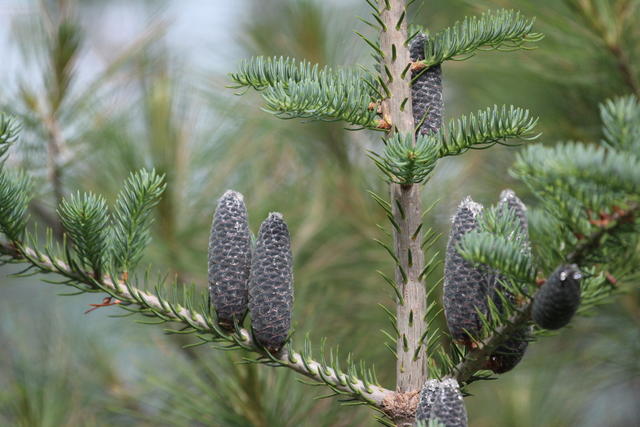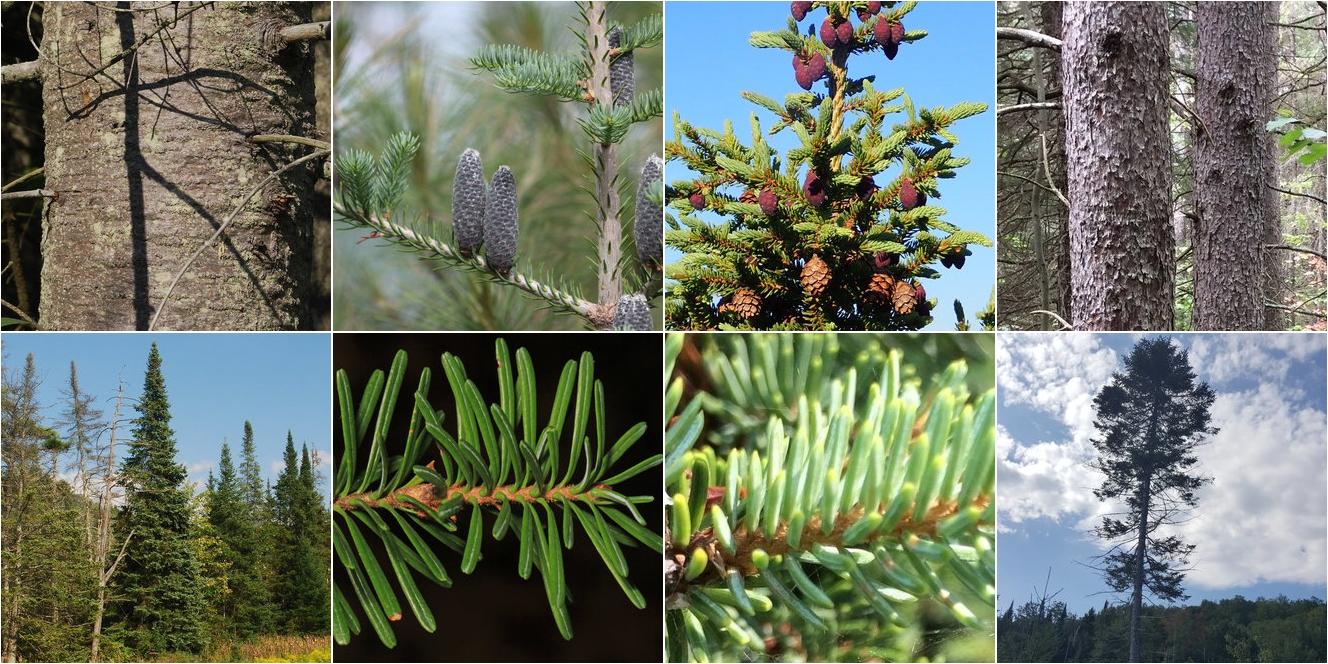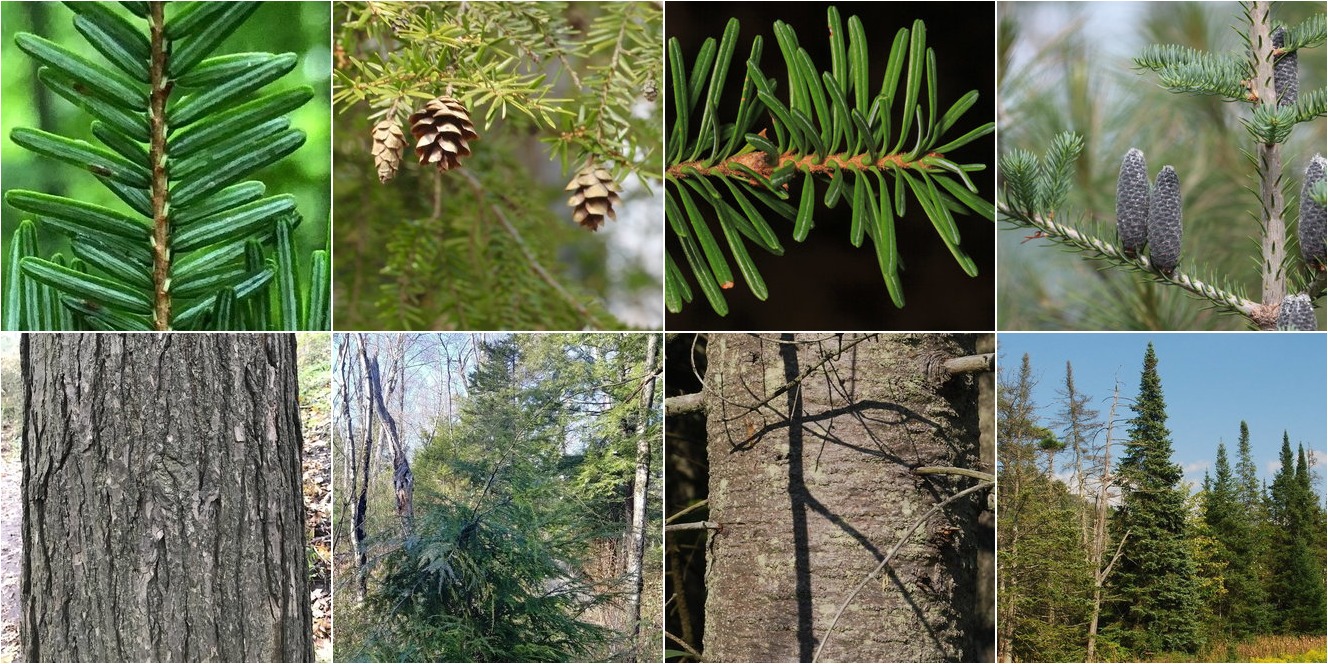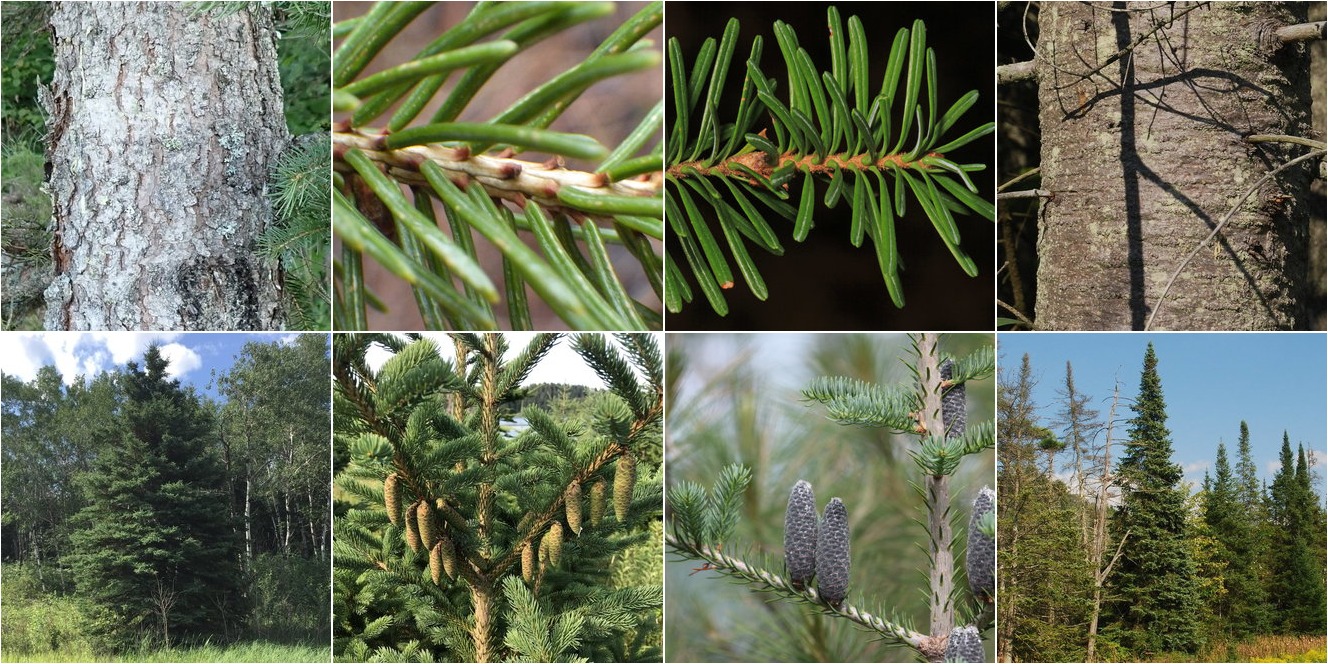Balsam Fir (Abies balsamea) vs. Black Spruce (Picea mariana)
Updated November 1st, 2021Although balsam fir looks very different from black spruce when growing in shade, black spruce is frequently confused with balsam firs growing in open, sunny conditions; the species look most similar when they co-occur on rocky sites near the tree line. Both can have a narrow, conical shape, short, bluish needles, and hairy twigs, especially on new growth. They are easily distinguished by cones or close examination of needles. They also have differences in shape, as well as habitat and successional stage: balsam fir is absent from bogs and poorly-drained sites, where black spruce is common, and balsam fir occupies a later stage in forest succession in areas where both species co-occur.






